
NeoVernacular Footwear
DAE / 2022
Context: Masters Graduation Project
Photography: Julien Chaintreau
Video: Julien Deceroi︎︎︎
In today’s dislocated global market, populated by an abundance of high-tech sneakers, I am willing to highlight the responsibility that individuals share when purchasing a new pair of shoes. For this project, I developped a nomadic shoemaking workshop intended at sparking appropriation. The Neo-Vernacular Footwear platform aims at transmitting a possibility to craft moccasins in an accessible way by manipulating specifically hacked kitchenware tools to process local resources.
Without any distance between maker and wearer, the Moc-toe and its production-line return to the vernacular principles of the rudimentary leather silhouette native to North America. Even without the need for prior crafts skills, easily available tools and resources make it possible for individuals to physically re-engage in the fabrication of their own shoes and take agency on their consumption behaviour.


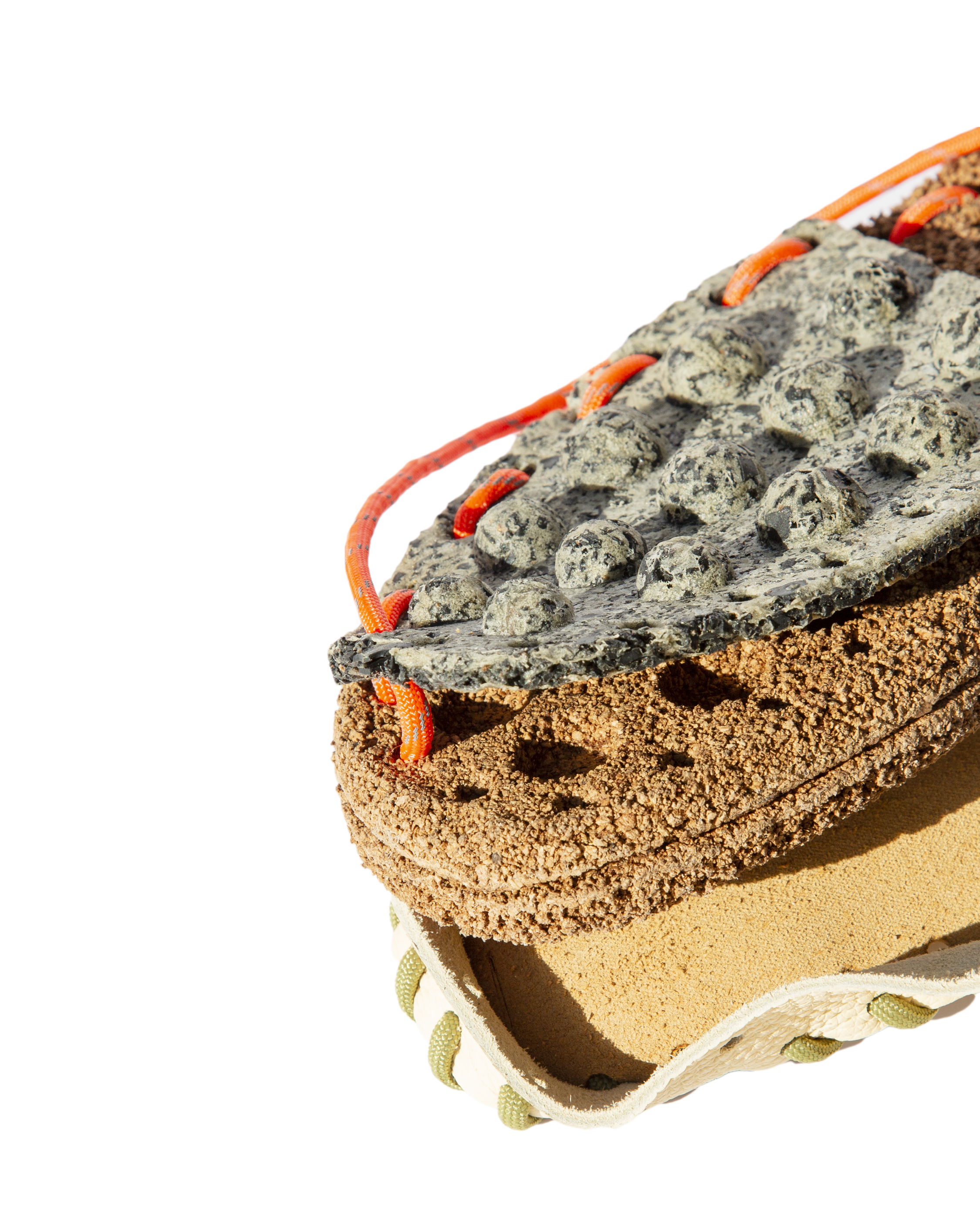
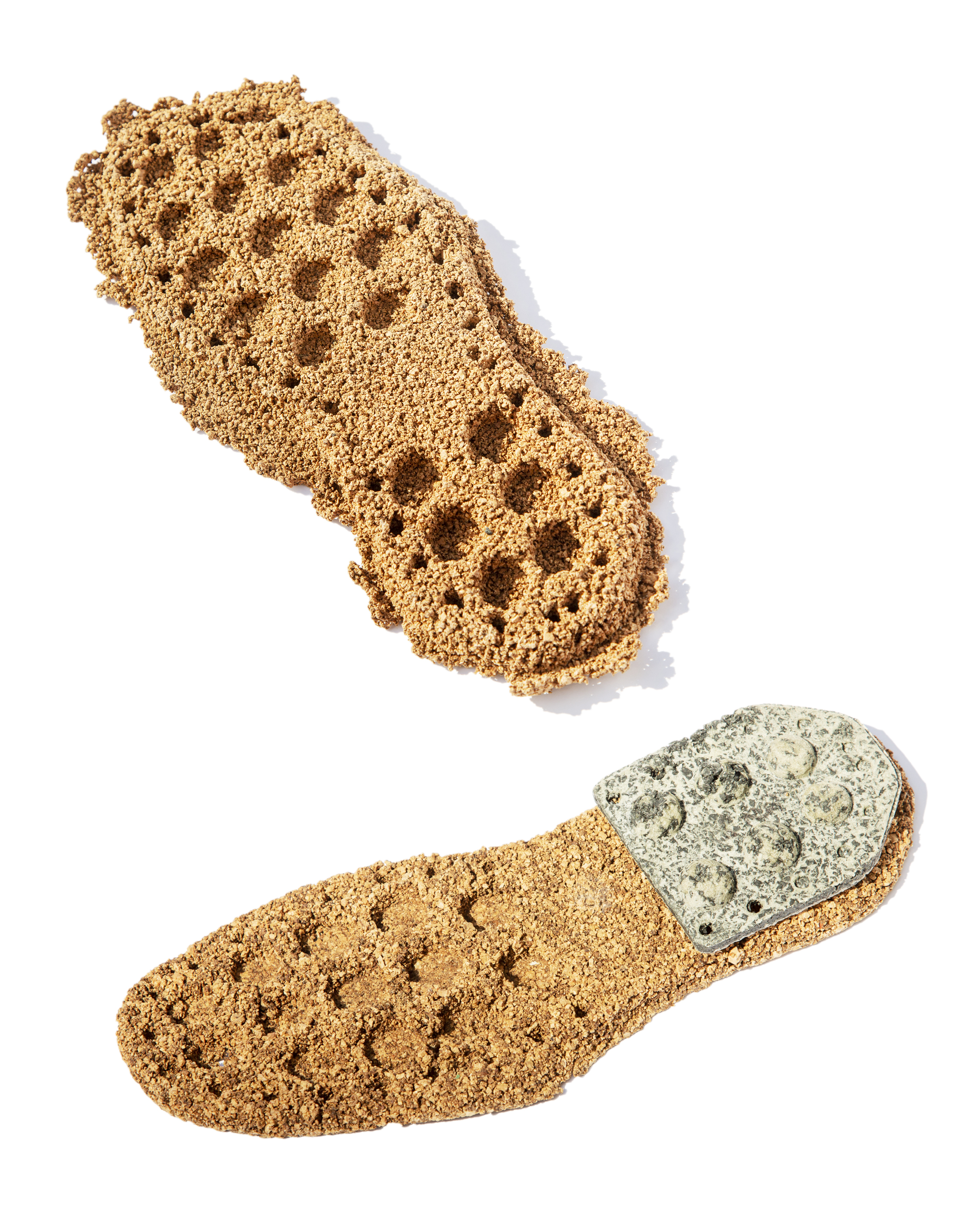

The project was articulated considering that Moccasins used to be made and worn by the same individuals a couple centuries ago. Yet, within the present industrialized landscape, finding local resources that are easy to process for making shoes is rather challenging. Nevertheless, I felt that I had to explore the potential materials available, nearby Eindhoven (NL) to look for sustainable alternatives.
Foraging my surroundings for the purpose of this research, I recorded the outcome with a short video that I called Quête Matérielle Chaussure . I was able to find a myriad of waste which was suited to build a rudimentary shoe. In the end I built a Moccasin out of tarpaulin, different kitchen textiles, window blind rope and a carpet for the sole unit.
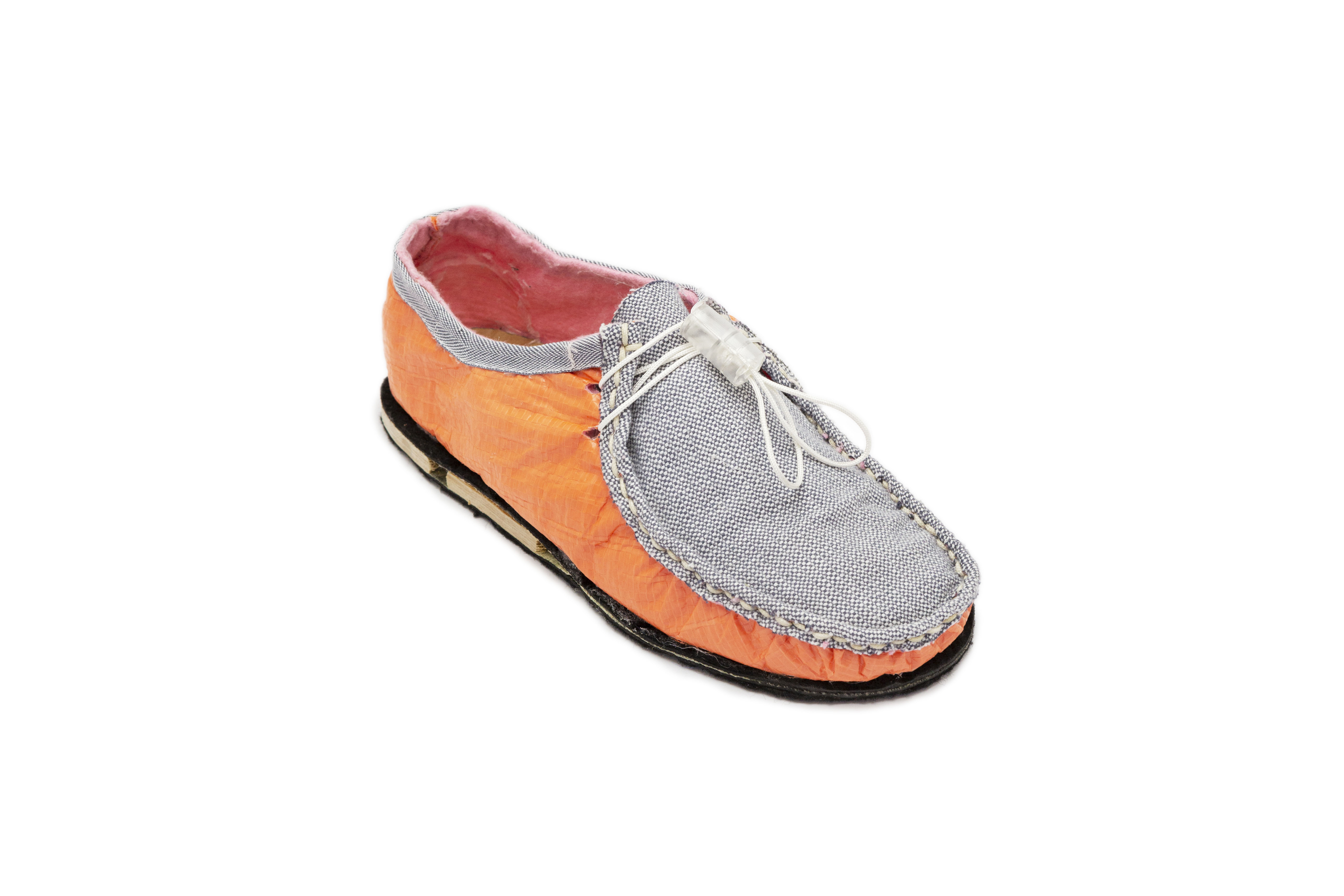


After building up the previous Moc-toe out of waste, my aim was to develop a system that could be truly sustainable and spark for individual appropriation within different locations. Vernacularity is the physical manifestation that differenciates communities in their act of sustaining their needs by utilizing only local resources, eventually forging an original range of territorial and cultural artifacts.
In an industrialized context, this approach remained under-explored yet. This project must be seen as the modern renactment of vernacularity.
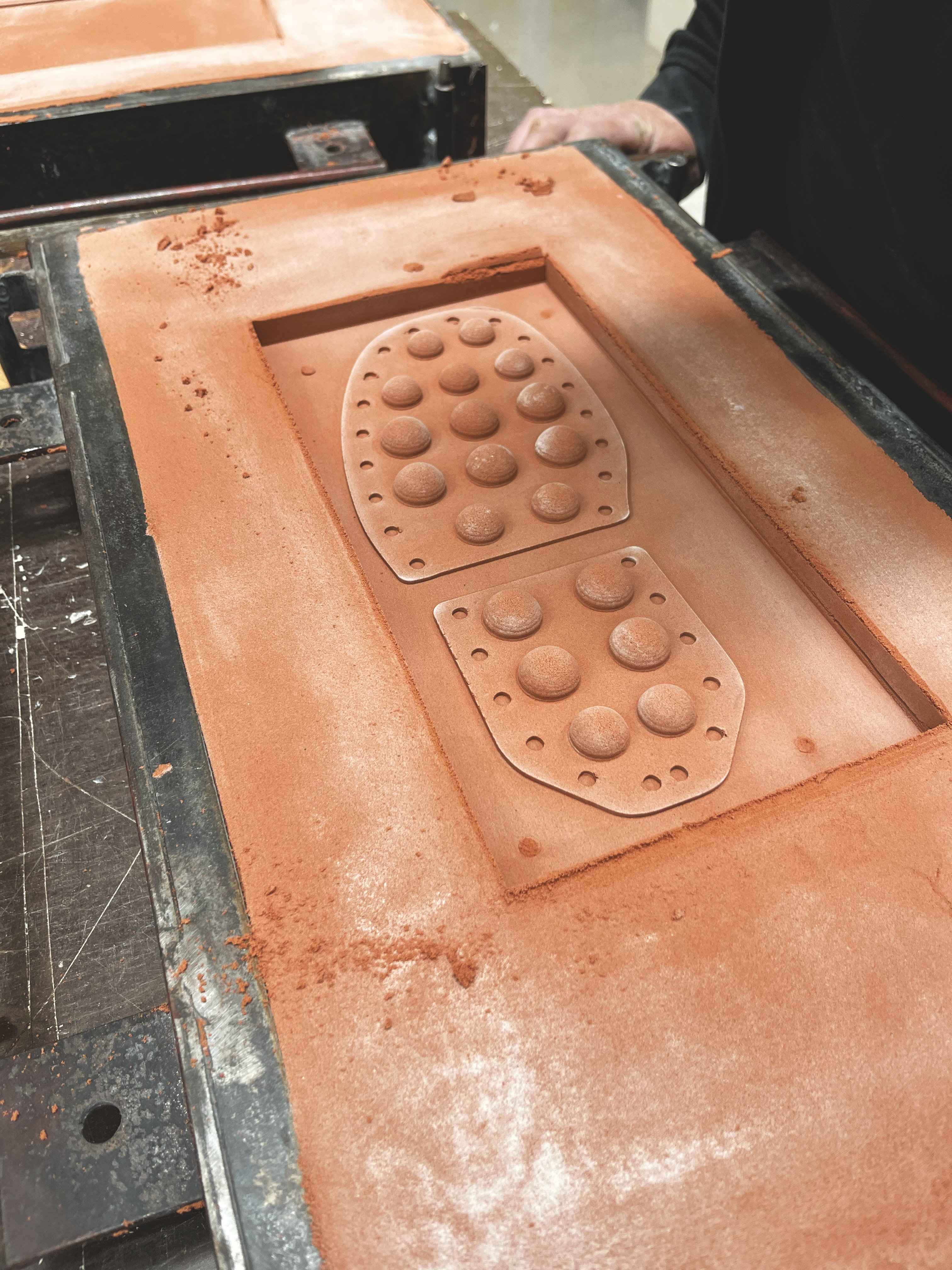

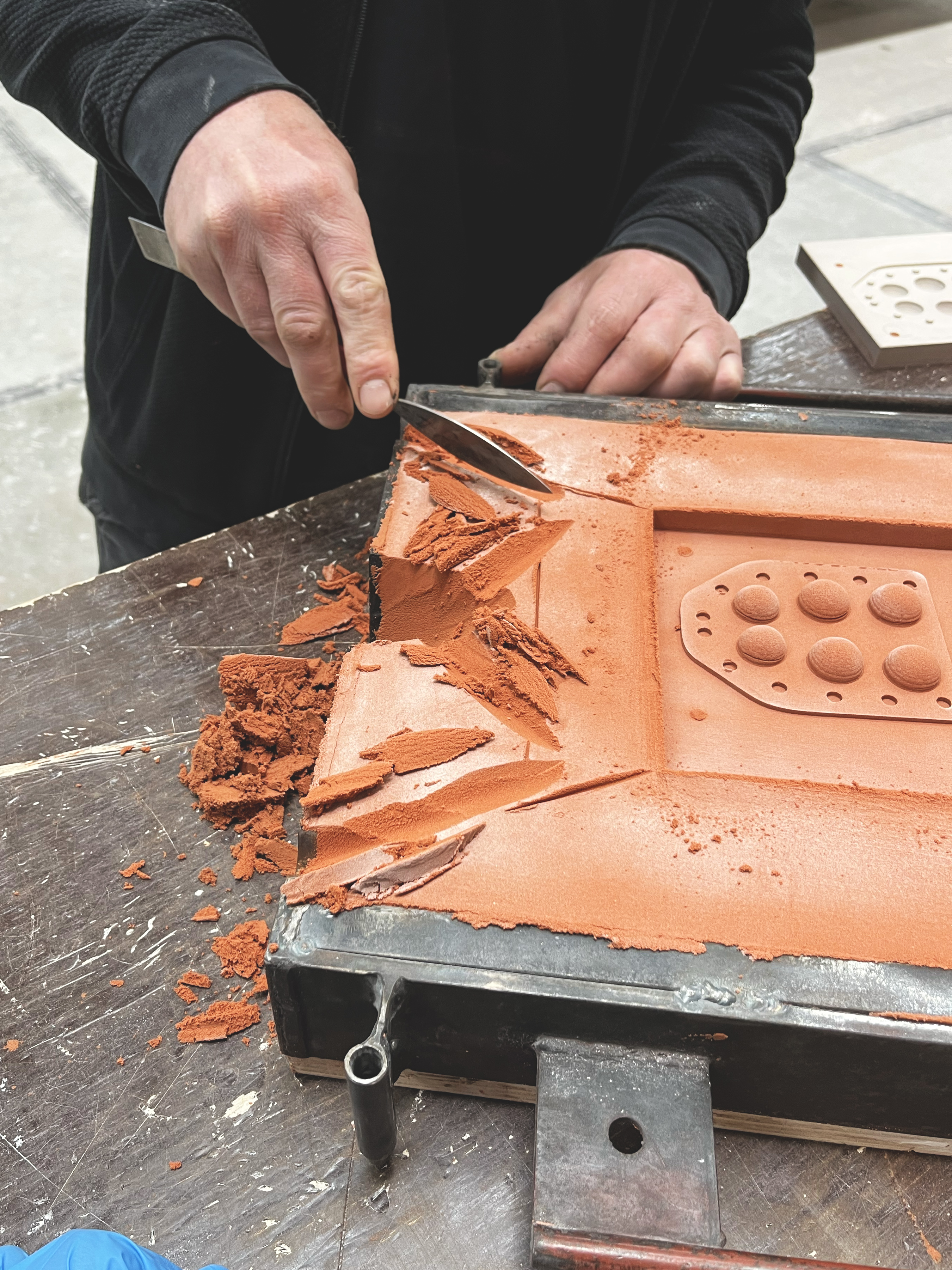
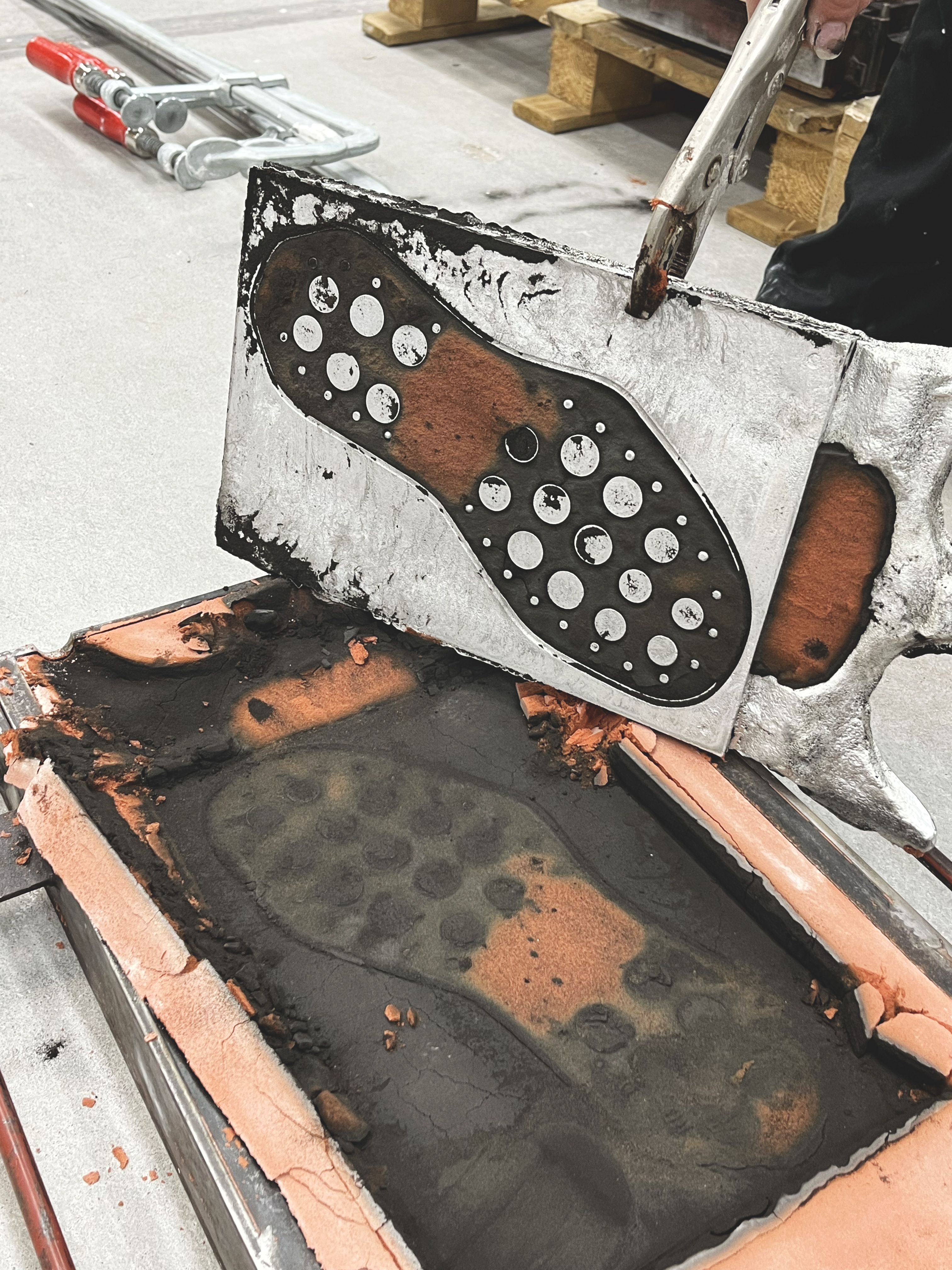




Inspired by the kitchen environment, I picked a waffle maker with removable iron plates and replaced them with my own bottom unit tooling. I embarked on a journey for building these tooling plates, reaching out to a local metal foundry called MAKE Eindhoven︎︎︎, where I casted them in aluminum. I could later form the midsole out of cork and the outsole out of grinded inner-tubes that I sourced from Decathlon’s trash. Concerning the upper, I looked into seveal youtube tutorials about die-cutting. After couple of tests, I designed my own die-cut while introducing a different user experience that calls on the body weight to entirely cut all the leather patterns at once.
Seeking to promote co-creation of such a consumer product in order to reconnect individuals with their own territory, I decided to create a physical platform. Apprehending manufacturing from a more relaxed and playful perspective, l elaborated a set of tools where the body itself would contribute in processing these materials divided into 4 separate workstations.



Acknowledgments:
- Matteo Bellentani, Head of Design at Clarks Originals
- Martin Sallières, Senior FW designer at Sunnei
- MAKE, Metal Foundry in Eindhoven
- Metal-Line B.V. Cutting blades
- Clément Toumire, Friend & Support
- Dylan Akono, Cork Sourcing
- Nico Neves, Starring
